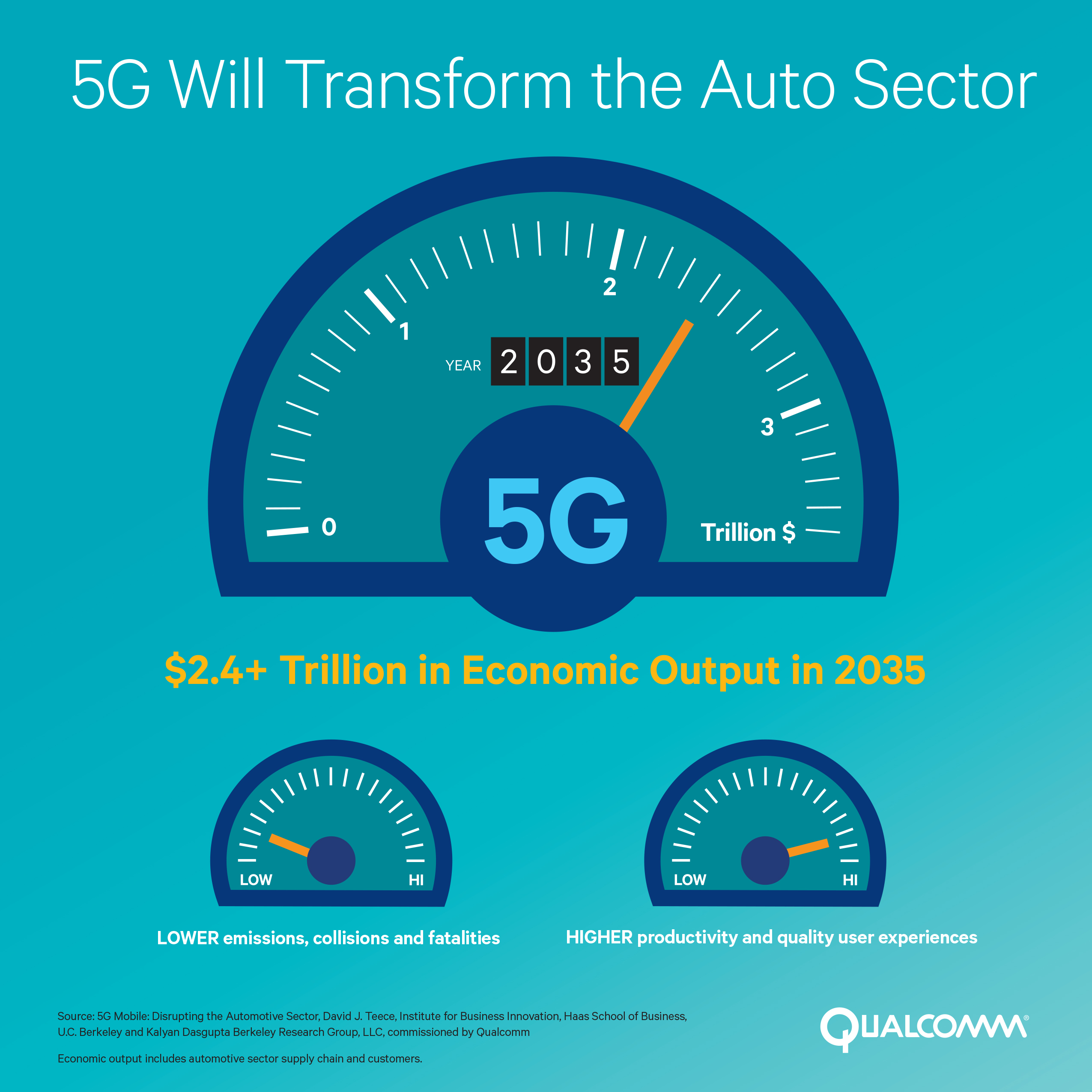Report: By 2035, 20 percent of 5G's economic impact will be in automotive


It's no secret that 5G networks will have a tremendous impact on the automotive market. Qualcomm on Wednesday is publishing a report that attempts to quantify that impact.
By 2035, 5G will enable more than $2.4 trillion in total economic output across the automotive sector, its supply chain, and its customers, according to the paper "5G Mobile: Disrupting the Automotive Industry." That's nearly 20 percent of the total economic impact of 5G, which a previous Qualcomm-commissioned report projected would reach $12.3 trillion in 2035.
The latest study, produced by UC Berkeley economist David Teece, builds on that research to more specifically explore 5G's impact on the automotive sector -- an area where Qualcomm and several other technology companies are making bold investments. Last fall, Qualcomm reached a deal to acquire NXP Semiconductor for $47 billion to help it move into the IOT and automotive market. US regulators approved the deal last month, and EU regulators are set to rule on the deal by June 9.
Teece's report breaks down the economic impact of 5G enablement across the automotive vertical and its related sectors: The automotive vertical itself is expected to see $467 billion in sales enablement by 2035, the report says. Tier 1 suppliers and the extended auto supply chain are projected to see $506 billion of sales enablement, while users and customers of the automotive sector should realize $1.44 trillion of sales enablement.
5G will be critical in the automotive sector, because it will enable communications technologies necessary to push the industry forward and that "may in fact become integral to their functioning," the report says:
For example, 5G's high bit-rate could enable the upload and download of high volumes of 3D mapping data or the upload of sensor data to develop vehicle autonomy AI. Crucially, the 5G standard is being specifically developed with ultra-reliable and low latency communications (URLLC) and massive Machine Type Communication (MMTC) in mind.
The report also notes that the 5G-connected automotive market will come with new opportunities and challenges for traditional carmakers, content developers and software and technology firms. For instance, 5G should expand the market for in-car entertainment and productivity tools, and it should foster the development of on-demand transportation services.
UK mulls 5G funding switch after Brexit